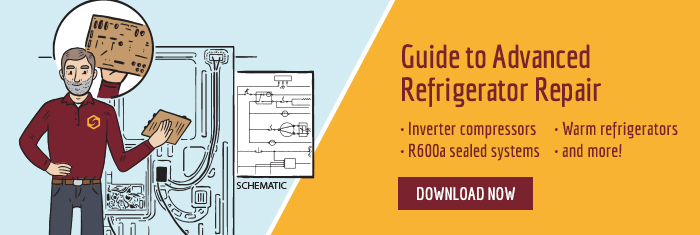Four Common Tech Phrases Explained and Mythologies Debunked
Techs as a community have developed some bits of jargon that serve as shorthand ways of describing specific technical situations. These phrases are useful for saving ourselves time and breath, but sometimes the exact definitions get blurry. Even worse, sometimes the way that the phrase sounds gets confused for a description of the actual science/physics behind what's going on, leading to a variety of "tech myths". Let's clear up a few of these terms.
"Failing under load"
This a situation where a component in a circuit tests within specifications on an ohms reading, but then fails to do what it's supposed to do once power is applied to it. The component is said to be "failing under load". What's happening here is that once electrons start shooting through that component (motor windings, switch contacts, whatever), the metal that it's comprised of begins heating up and expanding. If the component is damaged in some way, this expansion can cause an open or a high resistance section to appear, which prevents the component from working properly.
Failing under load only happens in AC circuits, by the way. This is because for that thermal expansion in the conductor to happen, there has to be a significant amount of current moving through it -- at least a few amps. The kinds of DC circuits that we work with as appliance techs are never that high current. They're more on the order of milliamps.
"Ohms lie"
This phrase is related to failing under load. When you hear a tech say "ohms lie," he's referring to the fact that a component can measure within spec on ohms, but still fail under load. In other words, the ohms reading telling you that the component was "good" was a lie.
This is obviously a colloquial way of saying that ohms measurements in AC circuits shouldn't be taken as diagnostically conclusive, unless of course the measurement shows that the component is out of spec -- either very high resistance (essentially open) or shorted to ground. You can trust an ohms reading when it tells you that a component is "bad" (i.e., open or shorted to ground), but not necessarily when it tells you that the component is "good."
"Amp draw"
This one has tripped up a lot of good techs over the years. We might say something like, "The expected amp draw of the compressor is 1.2 amps." What we're saying here is that, when 120 VAC is applied to across the compressor motor windings, that voltage is going to force an amount of electrons through the compressor windings equal to about 1.2 amps.
What we're very much not saying is that the compressor somehow "sucks" electrons through itself. Electrons move in response to a voltage difference between two points in a complete circuit, NOT as a result of loads "sucking" or "drawing" them. As you know from Ohm's law, current is just a function of voltage and resistance: I = E/R.
"Loading down"
Every now and then we all run into a spooky situation like this: you have a multi-board configuration (let's say a UI board and a main control board), and the appliance isn't doing anything. None of its loads are running and the display is dark. While you're troubleshooting, you unplug the harness connecting the UI to the control board. As if by magic, you suddenly hear loads begin to run in the machine.
What's happening here? It's not magic, it's just DC voltage. When a sub-board (that's what you call a board that is dependent on another board, like the UI is to the main control) fails in such a way that it has a short to DC ground, this allows a bunch of current to flow through that short to ground.
DC power supplies always have a rated wattage. That's the maximum amount of power they can ever put out at any given time. Since power is a function of current and voltage (P = I x E), if your current spikes up high enough, then the voltage that the power supply is able to produce will have to start going down. And this is exactly what happens when you have a DC short -- you get a ton of extra current, which means that the voltage drops to a point where it's no longer able to power any of the loads.
This is a vitally important thing to be aware of in multi-board systems, and even in single-board systems, since it's possible for DC loads to load down control boards as well.
Want to learn more about loading down? We have a great video for Appliantology premium tech members covering it here:
-
.png) 2
2






0 Comments
Recommended Comments
There are no comments to display.